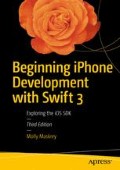Abstract
At the time of this writing, you’ll find iOS devices available in about half the world’s countries, with that number continuing to increase over time (see Figure 22-1). Available on every continent except Antarctica, the iPad and iPod touch continue to sell all over the world and are nearly as ubiquitous as the iPhone. If you plan on releasing applications through the App Store, think about more than just people in your own country who speak your own language. Fortunately, iOS provides a robust localization architecture letting you easily translate your application (or have it translated by others) into, not only multiple languages, but even into multiple dialects of the same language. Providing different terminology to English speakers in the United Kingdom as opposed to the United States no longer represents a problem.
Access this chapter
Tax calculation will be finalised at checkout
Purchases are for personal use only
Author information
Authors and Affiliations
Rights and permissions
Copyright information
© 2016 Molly Maskrey, Kim Topley, David Mark, Fredrik Olsson and Jeff Lamarche
About this chapter
Cite this chapter
Maskrey, M., Topley, K., Mark, D., Olsson, F., Lamarche, J. (2016). Translating Apps Using Localization. In: Beginning iPhone Development with Swift 3. Apress, Berkeley, CA. https://doi.org/10.1007/978-1-4842-2223-2_22
Download citation
DOI: https://doi.org/10.1007/978-1-4842-2223-2_22
Published:
Publisher Name: Apress, Berkeley, CA
Print ISBN: 978-1-4842-2222-5
Online ISBN: 978-1-4842-2223-2
eBook Packages: Professional and Applied ComputingApress Access BooksProfessional and Applied Computing (R0)

